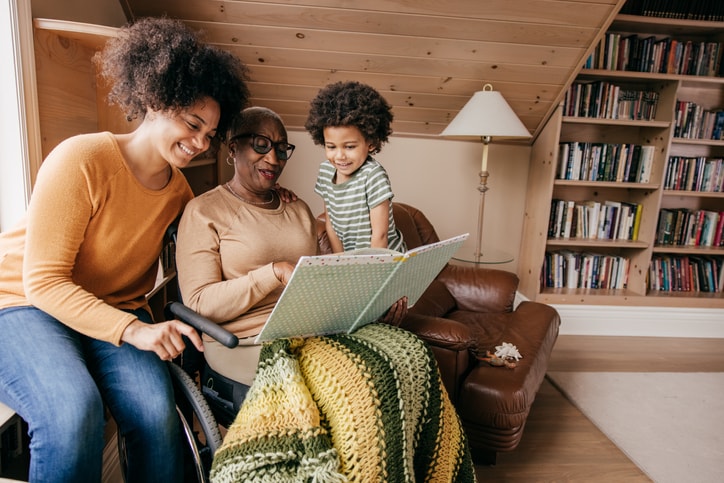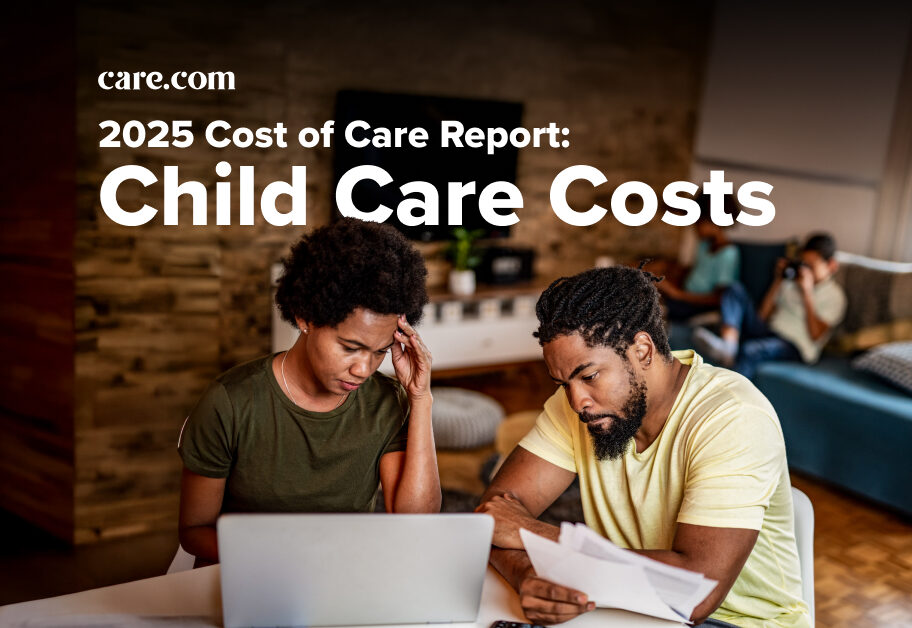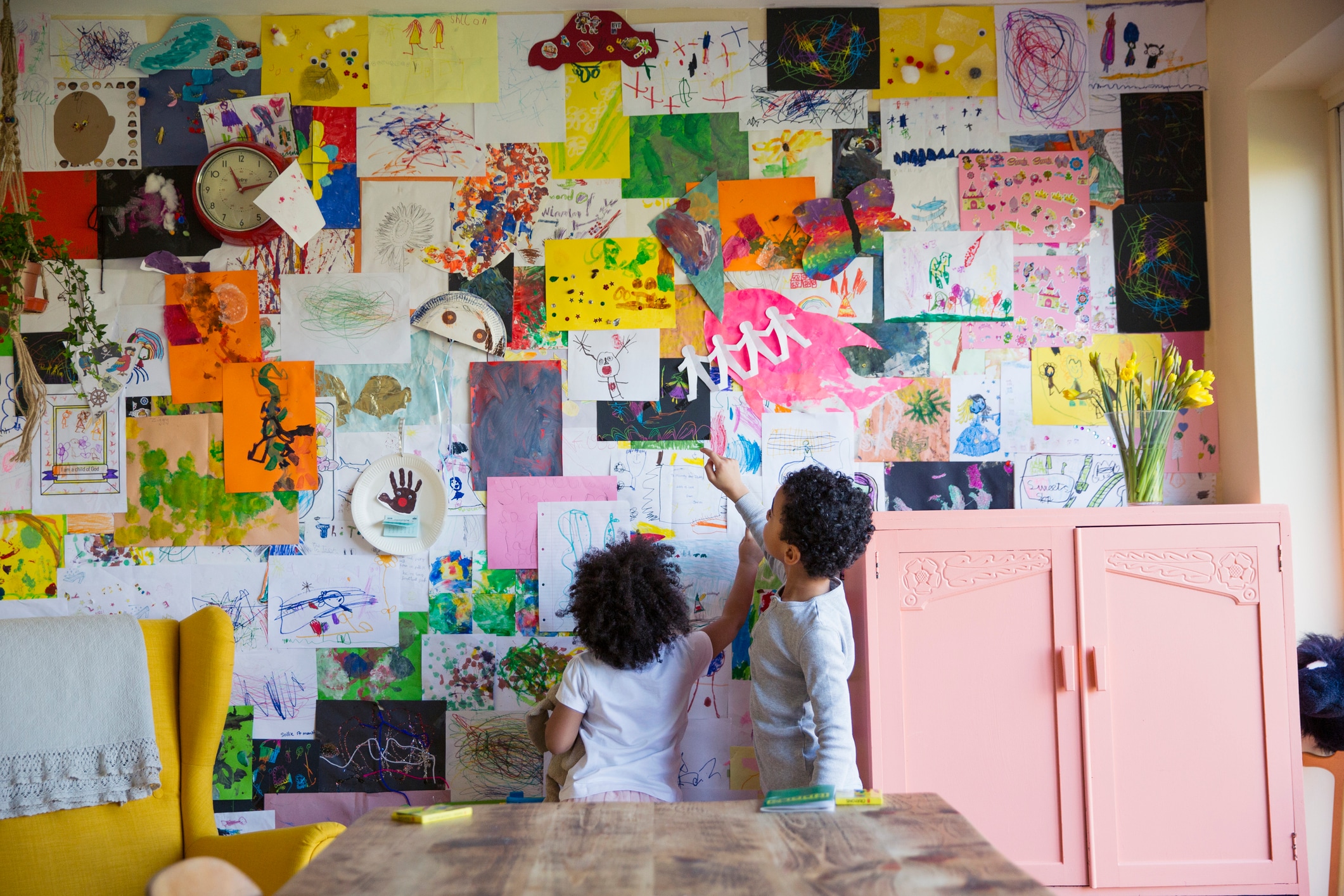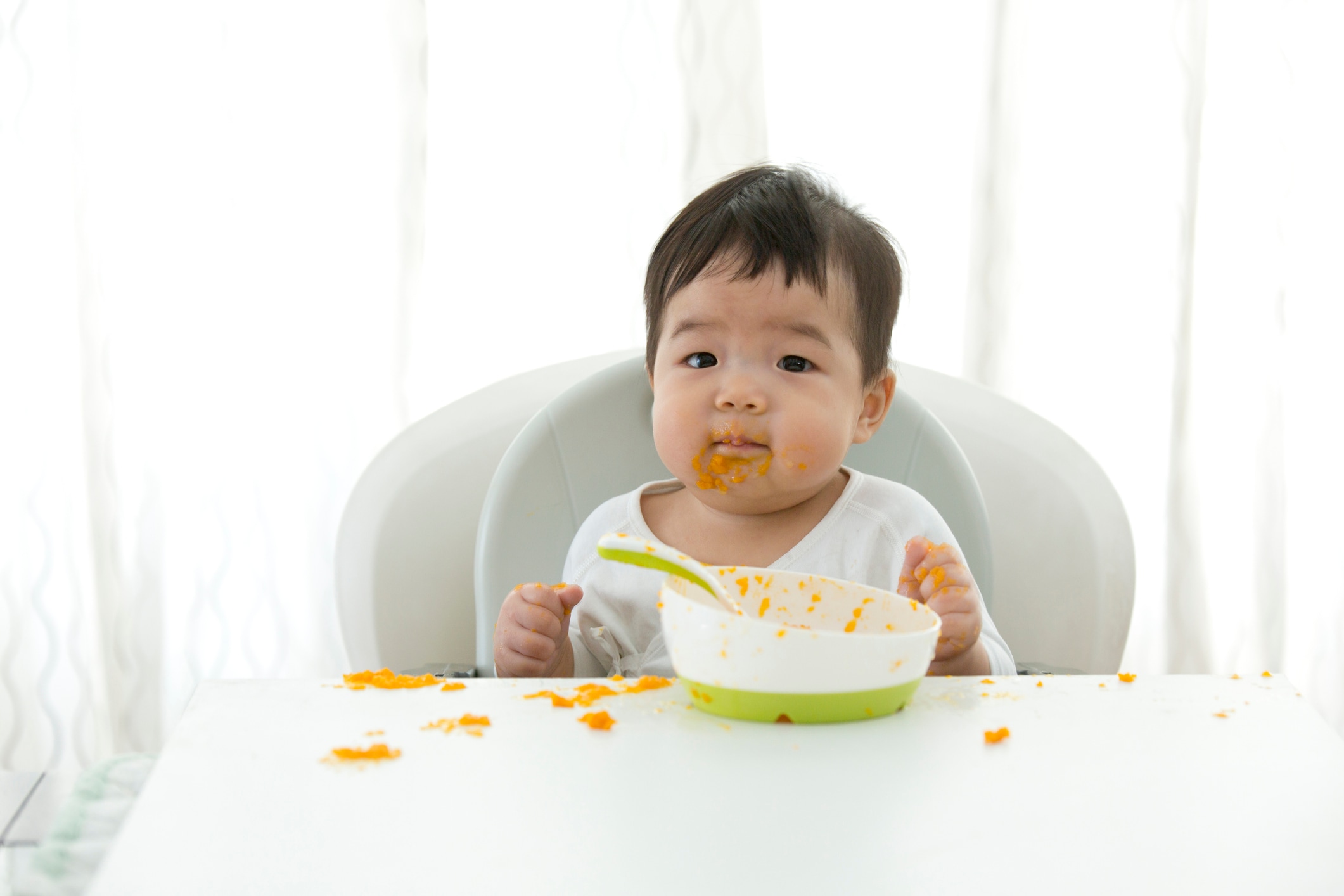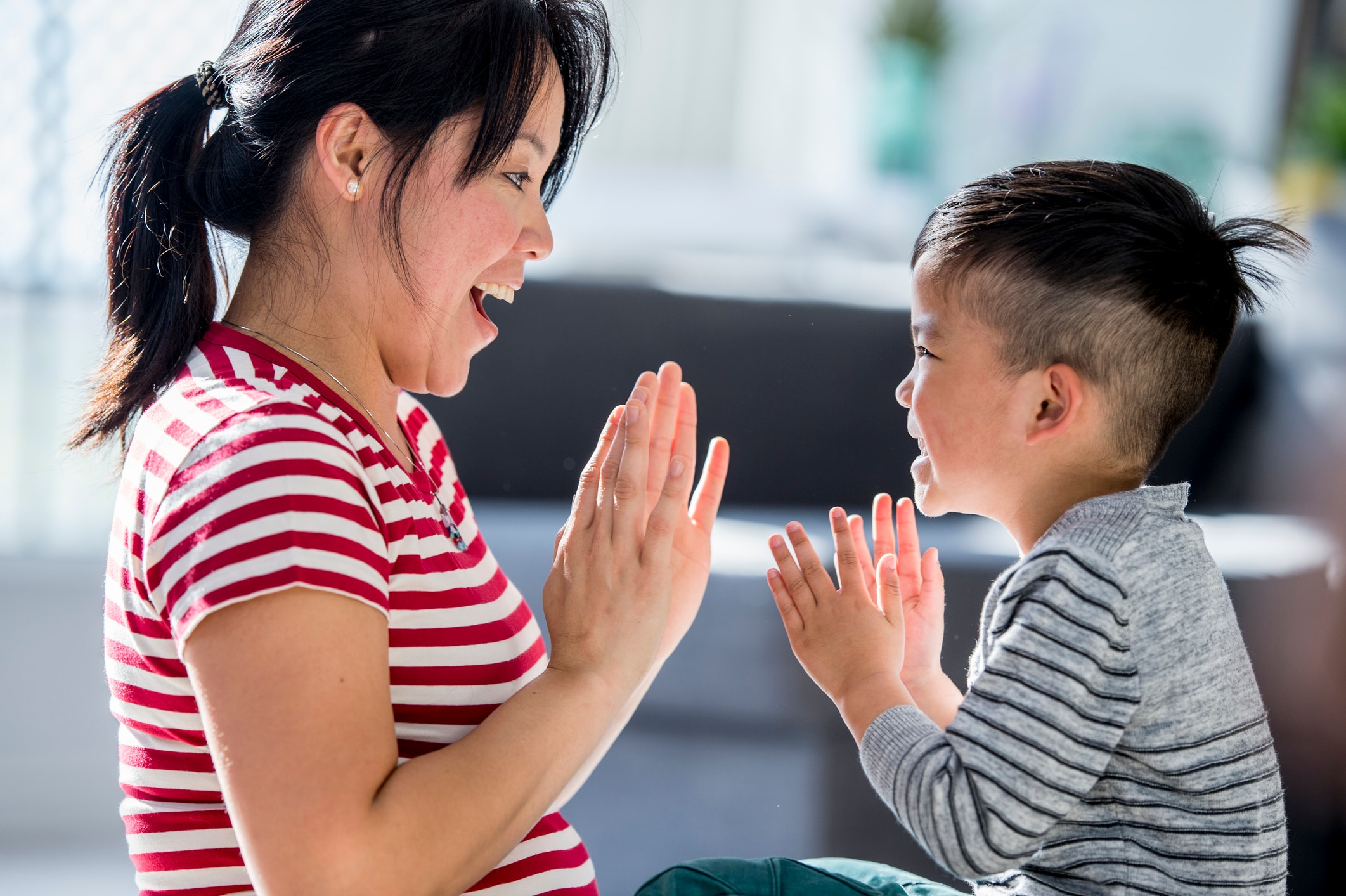When sandwich caregiving — defined as a parent caring for both young kids and aging parents or other older adults — becomes part of a family’s story, it can be tough on everyone involved. But we rarely talk about how sandwich care may disrupt the bonds between kids and grandparents (or other beloved older relatives).
“Young people in a sandwich caregiving situation may be anxious,” says Karen Roberto, a university distinguished professor at Virginia Tech and senior fellow at the university’s Center for Gerontology. “They may be sad, angry or resentful as they see someone they’ve known as their grandparent change.”
Although bridging the gap may feel like one more task for already-overtaxed sandwich caregivers, boosting intergenerational bonds can relieve caregiver stress, build kids’ empathy and compassion and provide much-needed comfort and love to care recipients.
Here, we look at why a gap between kids and older loved ones might arise, how it may affect your family, the benefits of encouraging intergenerational bonds and expert tips for doing so.
Why a generation gap might exist in during sandwich caregiving
As caregiving needs arise, multiple factors — including anxiety and fear, competing needs, and the sheer time demands on sandwich caregivers — can weaken intergenerational bonds, says Laurie Zelinger, a child psychologist and the author of “Please Explain Alzheimer’s Disease to Me: A Children’s Story and Parent Handbook About Dementia.”
Fears and anxiety
First, children may be anxious or fearful about cognitive or physical changes in their loved one.
“Many children are afraid of death, and when they see someone who looks frail, they are often afraid that person will die,” says Zelinger. “Children often will not want to see the ailing person and forging that relationship can be very difficult.”
Vanessa Bradden, a licensed marriage and family therapist who has a small group practice in Chicago and has led caregiver support groups, as well as having personal experience with sandwich caregiving, agrees. “It’s difficult even for an adult to walk into a room and see somebody who used to be full of life now really declining,” she Bradden says. If children are going to spend time with an ill or dying relative, she says, “You need to judge how traumatizing it would be based on the kid.”
Preparing a child with accurate, age-appropriate information about their relative’s condition, answering their questions honestly and validating their emotions are all important ways to support a potentially fearful kid.
Competing needs may lead to resentment or reduced bonding time
A tug-of-war between the competing needs of kids and older adults may further weaken intergenerational bonds in two ways: First, if either kids or older adults feel neglected or like they are not getting enough of the sandwich caregiver’s time, they may feel resentment. And second, the time-crunched sandwich caregiver simply may not have enough time to help kids and grandparents spend time together or build their bond.
“The sandwiched parent has additional stress when they must be in two places at once when a grandparent and grandchild cannot be together,” Zelinger says. “As the elder becomes more incapable, they require more time, attention and coordination, which reduces a parent’s availability to the child,” sometimes leading to resentment or sadness.
With sandwich caregivers already juggling so many competing needs, it can be all the more difficult to make time to promote family bonding. Simple time constraints, a frail elder’s lower attention span or energy, or kids’ busy schedules can all get in the way.
“It’s really important for kids to have a relationship and to bond with older relatives. Knowing that they have that support system is crucial.”
—Mary Alvord, a child psychologist
The benefits of addressing a bonding gap between seniors and kids
With all these obstacles, and sandwich caregivers also often struggling with guilt due to overflowing to-do lists, why try to repair bonds that may be weakening? Doing so — even in small ways — is valuable for kids, sandwiched caregivers and older adults alike. In the best case scenario, repairing intergenerational bonds can ease stress, emotional pain and the burden of care for the sandwich caregiver.
“It’s really important for kids to have a relationship and to bond with older relatives,” says Mary Alvord, a child psychologist who has published extensively on building resilience in kids. “Knowing that they have that support system is crucial.”
Bradden agrees, noting that the relationship between kids and a beloved older adult is a special one. Seeing a parent care for an older loved one, she says, can show them that “we take care of the people we love even when it’s hard, and sometimes life is hard.”
Bonding can build kids’ empathy and model care
When sandwich caregivers involve their kids in care tasks and help keep their connection with an older loved one alive, “it’s an opportunity to role model and foster empathy and care, which are such important skills for kids to be seeing,” says Bradden. Even if kids can’t visit an ill loved one because they are too sick, they can extend empathy through making cards or gifts.
From seeing caregiving up close, kids will also learn resilience — a key life skill — and problem solving, says Alvord. “I advocate for parents to think out loud about these issues, saying things like, ‘They’re in the hospital, and it’s a hard time, but you know what? There’s medicine, and they’re going to get better,’” she says. “When you vocalize problem solving to kids, you teach them to be proactive — a huge factor in resilience — and you show them you’re doing the best you can given what you can control.”
Intergenerational bonding gives older adults joy and purpose
For older adults whose condition or care needs may make it difficult for them to socialize or maintain their former lifestyle, bonding with younger generations — especially a beloved grandchild or other close relative — can bring much-needed joy and a sense of purpose. “For older adults, just having that liveliness” of contact with young people is valuable, says Roberto.
Sometimes older adults can recover roles they no longer occupy in most of their life through contact with young kids. For instance, during the COVID pandemic, Roberto’s research followed some caregiving families whose kids, suddenly home, needed reading time. Some sandwich caregivers solved the time crunch by having kids read to care recipients — which gave those older adults an important role. “That let the older person be the teacher, even if they had some cognitive problems,” says Roberto.
Bonding can relieve sandwich caregivers’ stress
Involving kids in age-appropriate care tasks can give sandwich caregivers a much-needed break. For instance, when kids are reading to older loved ones, both of the people the sandwich caregivers are responsible for are engaged in a positive activity — and, in turn, the caregiver can take a break.
That’s not the only way kids can get involved, however. Although Roberto cautions that it’s important that kids don’t start to feel like a babysitter for an older relative, she says “they can help with care tasks, maybe sitting down at the table and eating with the person, because it might take them longer.”
Bradden points out that it can also be healing for sandwich caregivers to see the bond between older and younger generations.
“Often what I can hear is something like ‘God, my mom’s so good with my kid, but she wasn’t like that when I was a kid,’” says Bradden. “If you come from a place of curiosity, sometimes you can observe that as a moment of healing. They may be a different person than when they raised you, and even if you had some difficulties with your own parents along the lifespan it can be a beautiful thing to watch them be really good to your kids.”
“When both generations are together, try an activity such as giving a manicure, painting a picture, singing a song, baking cookies or teaching a card trick.”
—Laurie Zelinger, a child psychologist and the author of “Please Explain Alzheimer’s Disease to Me: A Children’s Story and Parent Handbook About Dementia”
Tips to boost bonding between kids and older loved ones
So how can busy sandwich caregivers promote bonding without adding to their already considerable loads of stress and guilt? The experts we spoke to say the keys are preparation, compassion and keeping efforts low-key. Here are their top tips:
1. Keep interactions bite-sized
Rather than an all-day visit, try planning short interactions. “We always think about the family trip or the big stuff,” says Roberto. “Yes, that does build memories, but you can just do something small and enjoyable, and it doesn’t have to be very long.”
Sharing a quick meal or snack is a great example, says Bradden: “You could say, ‘We can go over and have tea with grandma or grandpa or bring some bagels to share, and then we’ll leave,’” she says. “It could be a half hour.”
2. Prepare kids for changes they may see in a beloved older adult
This might include medical equipment, appearance changes or cognitive changes, or even preparing kids for a loved one’s death, using simple, age-appropriate language. “You don’t have to get too long-winded,” says Bradden. “You can say something like, ‘I know it’s really scary. Grandma’s not doing very well today,’” says Bradden. “Kids are resilient and can handle more than we think.”
3. Use technology to your advantage
Even if distance or a loved one’s decline may make visits impossible, families can FaceTime or Zoom, or older kids can keep up an independent text or email correspondence with older relatives.
Having kids record video or audio to share can be meaningful, too, as Bradden recalls from caring for her mother. “I was very blessed to be able to be there when she was dying, and my husband had the kids record a video and a song,” she says. “I would hold it by her ear and let her listen to them talk about how much they loved her and that she was the best grandma.”
4. Plan an activity that engages the senses
Not only can this approach give a focus to visits, but it can also create lasting warmth. “When both generations are together, try an activity such as giving a manicure, painting a picture, singing a song, baking cookies or teaching a card trick,” says Zelinger. “A multi-sensory experience leaves a bigger memory imprint. It’s been 58 years since my grandmother passed away, but I still remember how she let me put her hair up in a bun with combs and bobby pins while she watched Lawrence Welk on our black and white TV.”
5. Engage kids in helping with age-appropriate care tasks
Not only does this build empathy and show kids, literally, how to care, but it also offers sandwich caregivers small breaks. For instance, kids can read the menu or help cut up a grandparents’ food on a lunch outing, says Zelinger.
6. Take advantage of good days for impromptu interactions, when possible
“When there are good days, really lean in and seize those opportunities,” says Bradden. “You can just say today’s a good day, and we’re going to spend some time over there.” Such days may also coincide with times when the caregiving burden is less intense, allowing the sandwiched caregiver a breather.
7. Acknowledge emotions and challenges
Kids may have negative feelings and reactions to changes in beloved elders or to the stress caregiving puts on the family, says Alvord, “and you want to validate those emotions and tell them it’s okay to feel sad, upset, disappointed, or angry.” At the same time, she says, revisiting positive emotions and memories can help your kids recall a relationship’s value.
8. Give kids agency — and don’t force it
“You want to give kids some sense of ownership in making a decision,” says Zelinger. “You can say, ‘I’m going to see grandma. I think it would be great if you could come with me. How do you feel about that?’” Parents can also offer kids choices about how long to stay or whether to bring along a book or tablet — but, Zelinger cautions, “the parent needs to understand if the child declines [to go].”
“You want to give kids some sense of ownership in making a decision. You can say, ‘I’m going to see grandma. I think it would be great if you could come with me. How do you feel about that?’”
—Laurie Zelinger
The bottom line
While it’s always hard to take on one more task as a sandwich caregiver, helping to foster bonds between older and younger generations can make a stressful time more meaningful for all. Intergenerational bonding may bring light to the older person’s waning days, help kids develop emotionally, and even pay off later when the sandwich caregiver, in turn, needs care.
The benefits can last a lifetime. “The empathy and caregiving skills that younger people develop don’t end when the older person may pass away or they’re no longer able to be in the home,” Roberto says. Kids, she says, “also get a perspective about aging, and what you really hope is that that will create greater sensitivity to issues of aging.”
